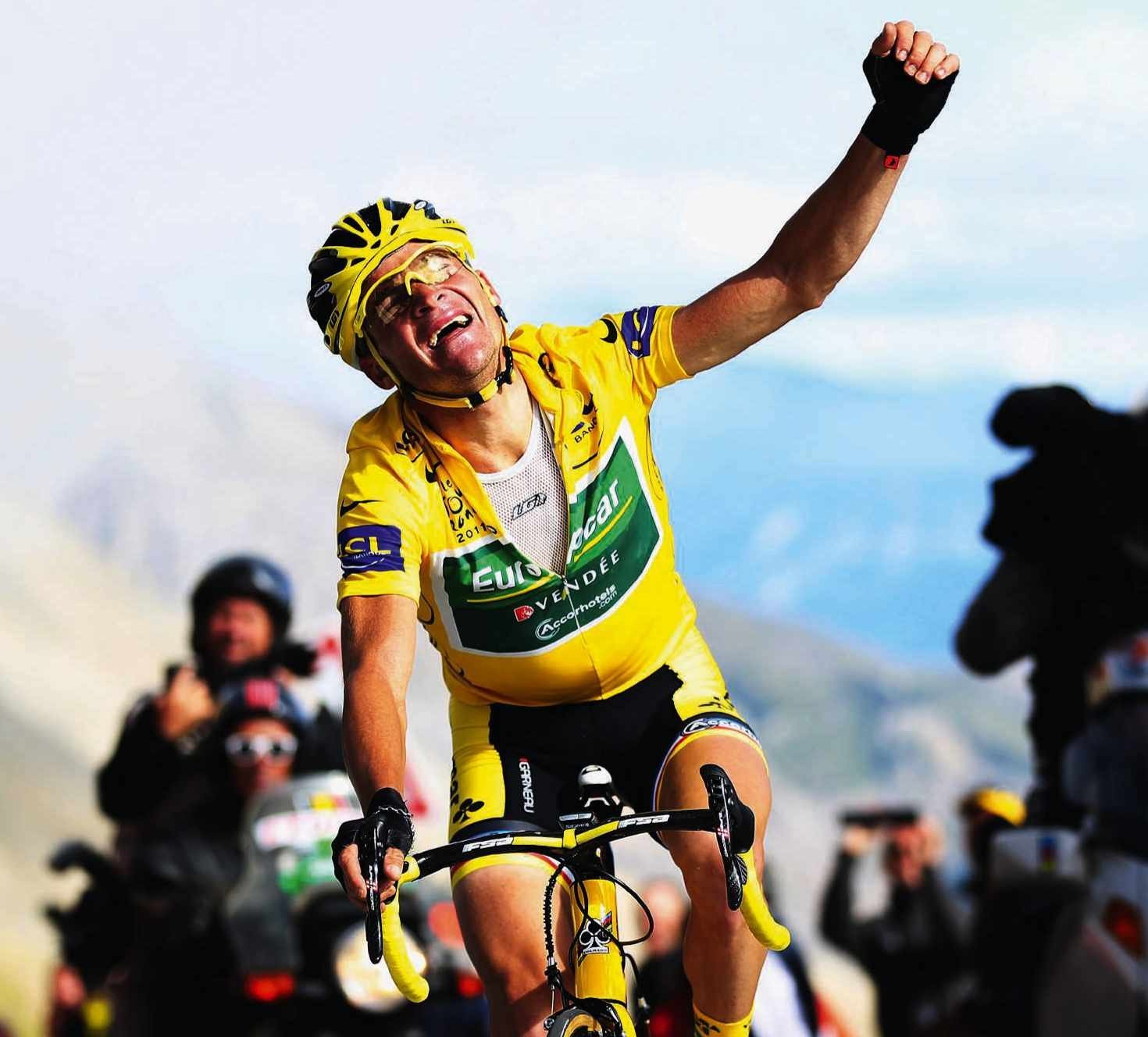ICONS OF CYCLING
Yellow jersey
Sport’s most iconic item of clothing has a unique power, for good and ill

No garment in professional sport emits a power like the yellow jersey, or maillot jaune, of the Tour de France. Since 1919, it’s been awarded daily to the rider leading the race and as the ultimate prize to the winner of the general classification come the race’s denouement.
Highly prized by those chasing it, those who do can be both inspired by it and end up in thrall to it, like the Lord of the Rings’ eponymous treasure. Julian Alaphilippe in 2019, for example, was empowered by it, wearing it for 11 stages in a row and coming close to an unlikely overall win in Paris. The stage 13 time trial in Pau was a prime example of how much of a driving force the jersey can be, powering a decent if hitherto unspectacular time triallist to victory over rivals, such as Geraint Thomas, with far greater pedigree in the discipline. On the contrary, in 2011 Thomas Voeckler, says Cyrille Guimard in Peter Cossins 2019 book The Yellow Jersey, “rode tactically in the opposite way to how he should”, and ended up losing the jersey prematurely.
Whether you capture the jersey early on and wear it all the way to the finish (no one rider has ever worn it for the entire race), wear it for a single day and everything in between, the jersey will have a profound effect on a career. It may well go down as the biggest prize they win as a professional, adding Euros onto their next contract or enabling a bumper move elsewhere.
Two hundred and twenty seven riders in the Tour’s 121-year history have worn it for at least one day, from Tom Simpson (Britain’s first yellow jersey) during a single stage in 1962, through to – you guessed it – Eddy Merckx with 96 stages. Fabian Cancellara holds the record for the most yellow jersey days without ever winning the race overall – 29 – which puts him 12th on the all-time list.
Cancellara, a well-known patron, or leader, of the peloton, didn’t need the jersey to hold outsized influence in the peloton, but for most others, it exudes a presence that isn’t afforded elsewhere. That said, when the race is on, even the person in the yellow jersey has their work cut out. The jersey also brings added stress and inconvenience, from the extra media commitments that the race leader must do, and from the knowledge that, despite the reverence, there is a target on your back. At the end of the day, it’s the jersey that holds the power, not the rider.